LAB REPORT
Science and Technology Making Headlines
Jan. 16, 2015

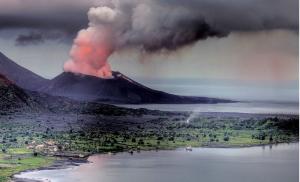
This image was taken during the August 2014 eruption of Tavurvur in Papua New Guinea. Lawrence Livermore researchers identified the climatic signals of some of the larger early 21st-century eruptions (such as the October 2006 eruption of Tavurvur).
Small volcanoes pack big punch on global cooling
The “warming hiatus” that has occurred over the last 15 years has been caused in part by small volcanic eruptions.
Scientists have long known that volcanoes cool the atmosphere because of the sulfur dioxide that is expelled during eruptions. Droplets of sulfuric acid that form when the gas combines with oxygen in the upper atmosphere can persist for many months, reflecting sunlight away from Earth and lowering temperatures at the surface and in the lower atmosphere.
New research by Lawrence Livermore scientists further identifies observational climate signals caused by recent volcanic activity. This new research complements earlier research, which relied on a combination of ground, air and satellite measurements, indicating that a series of small 21st-century volcanic eruptions deflected substantially more solar radiation than previously estimated.

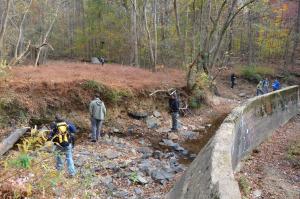
A breached dam in the North Carolina Piedmont with sediments retained behind the damn. These sediments likely originated from hillslopes eroded in response to human-induced deforestation.
The human touch on rampant erosion
Humans’ use of land, whether for farming or development, has eroded soil 100 times faster than nature working on its own.
According to new research, geologists found that European colonization and agriculture use in North America in the late 1800s and early 1900s caused as much erosion of the landscape over just a few decades time as would naturally have taken thousands of years.
The team studied the Roanoke, Savannah and Chattahoochee rivers along with seven other large river basins in the U.S. Southeast, and found, for the first time, a precise quantification of this background rate of erosion. The scientists discovered the rates of hillslope erosion before European settlement were about an inch every 2,500 years; during the period of peak land disturbance in the late 1800s and early 1900s, rates spiked to an inch every 25 years.
“Our study shows exactly how huge an effect European colonization and agriculture had on the landscape of North America,” said Dylan Rood, who conducted the research while at Lawrence Livermore. “Humans scraped off the soil more than 100 times faster than other natural processes.”

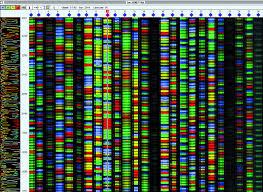
LLNL physical chemist George Farquar, who led a Lab team that invented DNATrax, demonstrates how the product can be applied to food to identify it down the food chain. If the food turns out to be tainted, DNATrax can trace it back to the source. Photo by Julie Russell/LLNL
DNATRAX food contamination
According to the Centers for Disease Control and Prevention, about one in six people contract a foodborne illness in a given year and as many as 3,000 are killed by them annually. But most contaminated foods are never traced back to their source.
Lawrence Livermore researchers are looking to change that.
It can take weeks to track down tainted food by following its supply chain from farm to table, but physical chemist George Farquar said DNATrax eliminates that hurdle.
DNATrax is described as an “invisible barcode” composed of sugar and non-living, non-viable DNA that is safe for consumption and can be sprayed on food products in the field or at the processing plant.

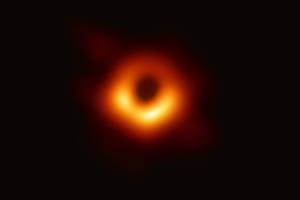
The monster black hole is revealed in this new image from NASA's Nuclear Spectroscopic Telescope Array of colliding galaxies Arp 299.
A whopper of a black hole
A new high-energy X-ray image from NASA's Nuclear Spectroscopic Telescope Array, or NuSTAR, has pinpointed the true monster of a galactic mashup. The image shows two colliding galaxies, collectively called Arp 299, located 134 million light-years away. Each of the galaxies has a supermassive black hole at its heart.
NuSTAR has revealed that the black hole located at the right of the pair is actively gorging on gas, while its partner is either dormant or hidden under gas and dust.
The findings are helping researchers understand how the merging of galaxies can trigger black holes to start feeding, an important step in the evolution of galaxies.
NuSTAR uses technology developed in part by Lawrence Livermore.

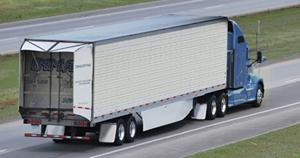
Work by Lawrence Livermore researchers in the use of truck skirts could help semi trucks become more fuel efficient.
Truckin’ could save billions
Each year, more than 2 million long-haul trucks crisscrossing America consume nearly 36 billion gallons of diesel fuel.
Researchers at Lawrence Livermore have discovered that adding drag-reducing devices to trucks could result in billions of gallons of fuel savings. The devices tested included trailer skirts — panels along the lower sides of the trailer that reduce undercarriage drag — and a rear tail fairing — essentially funnel-like panels added to the back of the trailer around the doors that reduce the wake produced by airflow traveling over and around the vehicle.
“Even a minor improvement in a truck’s fuel economy has a significant impact on its yearly fuel consumption,”said LLNL’s Kambiz Salari.
For example, 19 percent improvement in fuel economy translates to 6.5 billion gallons of diesel fuel saved per year and 66 million fewer tons of carbon dioxide emission into the atmosphere.





